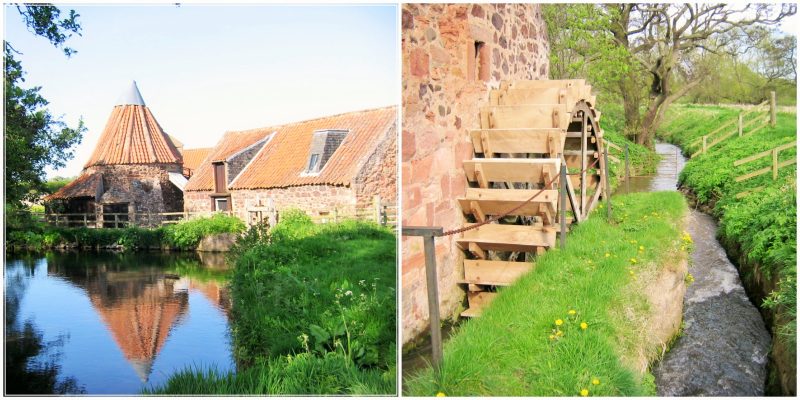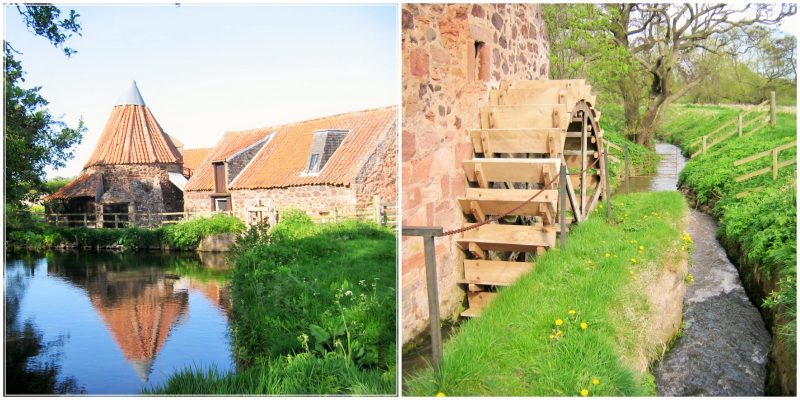By the early 20th century, availability of cheap electrical energy made the watermill obsolete in developed countries although some smaller rural mills continued to operate commercially into the 1960s. A few historic mills such as the Newlin Mill and Yates Mill in the USA and The Darley Mill Centre in the UK still operate for demonstration purposes. Small-scale commercial production is carried out in the UK at Daniels Mill, Little Salkeld Mill and Redbournbury Mill.
Some old mills are being upgraded with modern Hydropower technology, for example those worked on by the South Somerset Hydropower Group in the UK.
The oldest surviving water-powered meal mill in Scotland is Preston Mill, a watermill on the River Tyne at the eastern edge of East Linton on the B1407 Preston Road, in East Lothian, Scotland, UK. It is situated close to Prestonkirk Parish Church, the Smeaton Hepburn Estate, Smeaton Lake, and Phantassie Doocot.
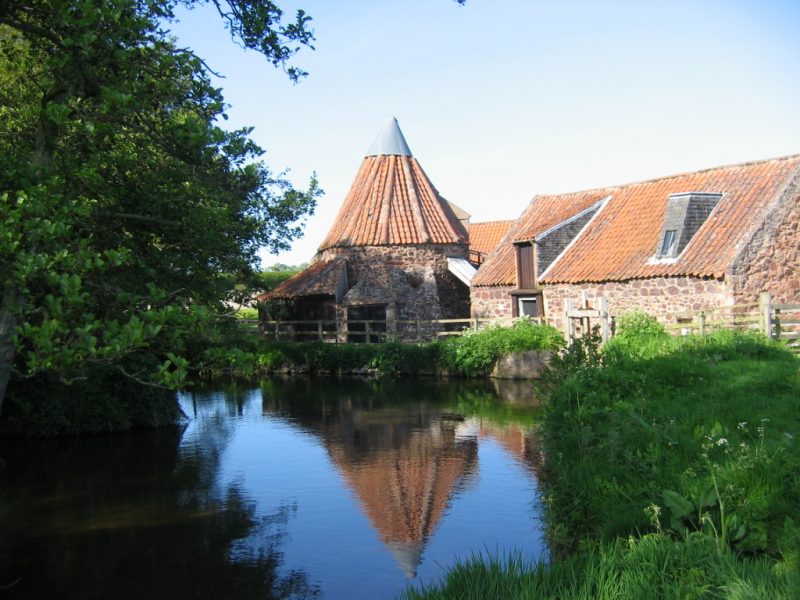
There has been a mill on the site since the 16th century. The present mill dates from the 18th century and is in the care of the National Trust for Scotland. It was used commercially until 1959, and it produced oatmeal. The River Tyne still drives the water wheel, and the machinery can still be seen at work by visitors taking part in a tour. There is also an exhibition about milling, and a mill pond.
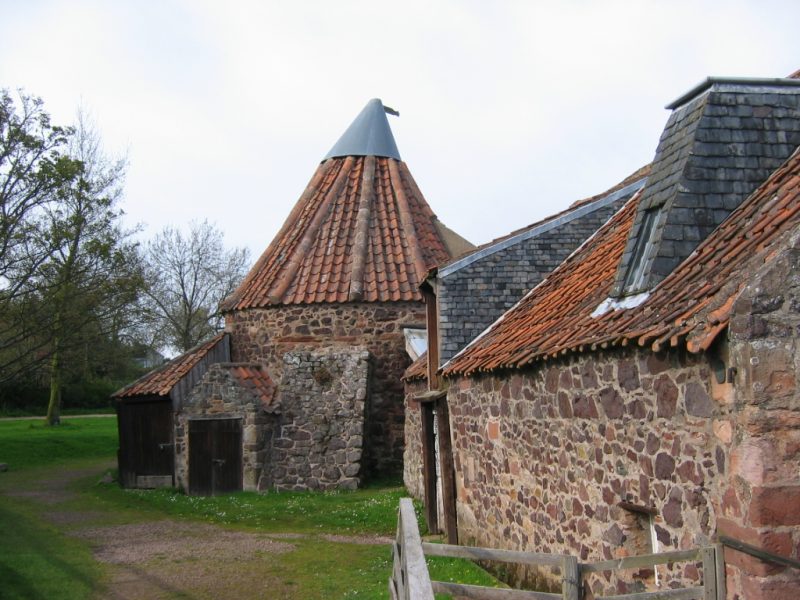
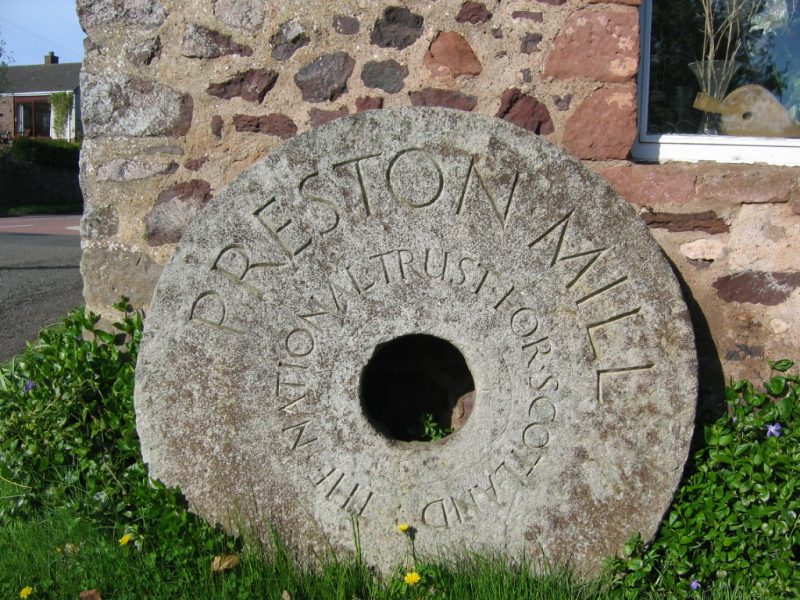
The engineer and millwright Andrew Meikle maintained the mill in the 18th century. In 1948 a flood submerged the buildings, and in 1950 a local land owner gave the mill to theNational Trust for Scotland. The milling firm Rank Hovis McDougall provided help with the renovation and expertise to allow the mill to be operative again.
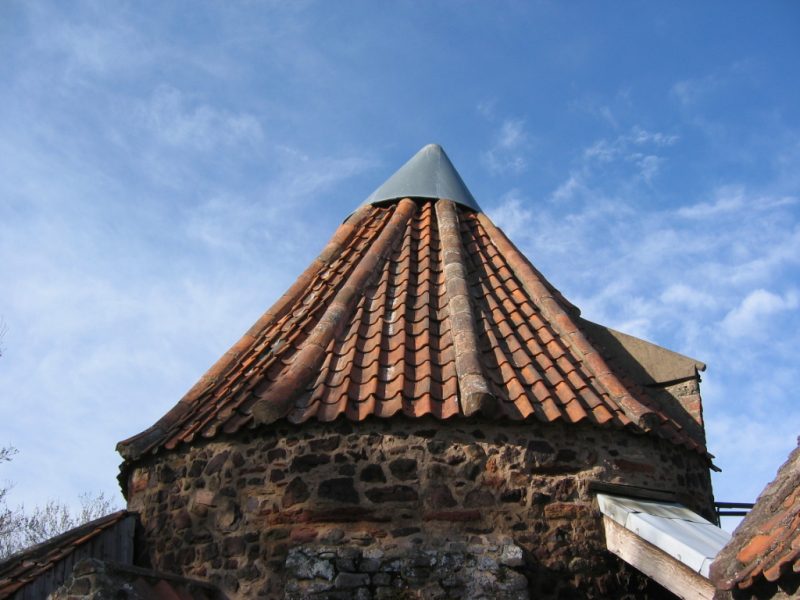
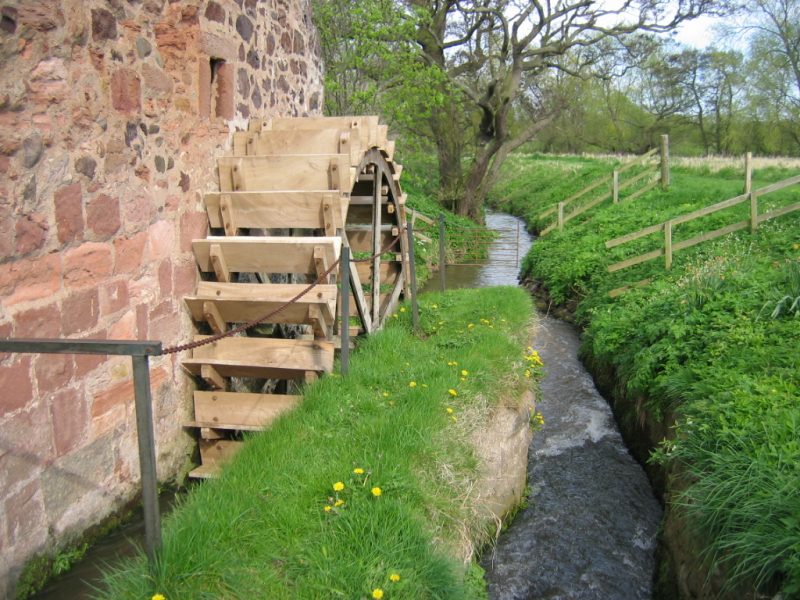
Preston Mill consists of a kiln, a mill, and the miller’s house. The mill wheel dates back to 1909. The mill is loved by visitors, painters and photographers, especially the kiln with its conical red pantile roof.
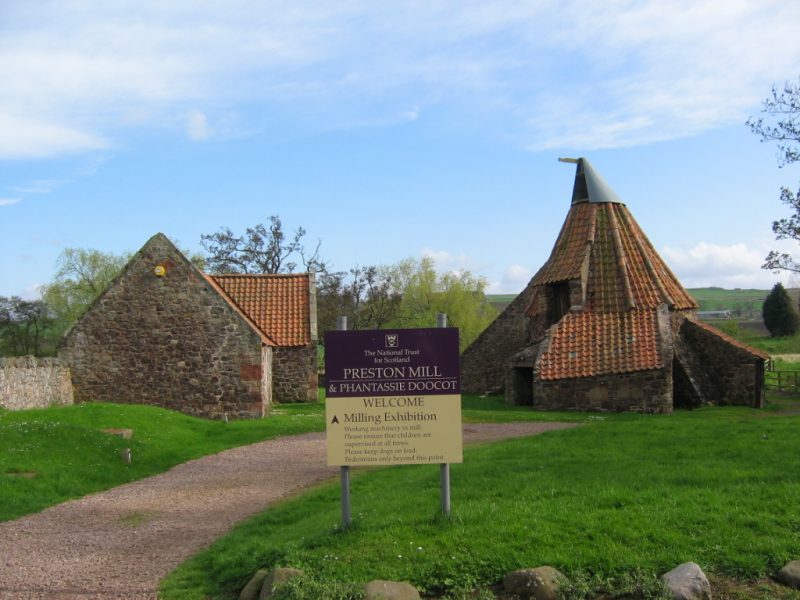
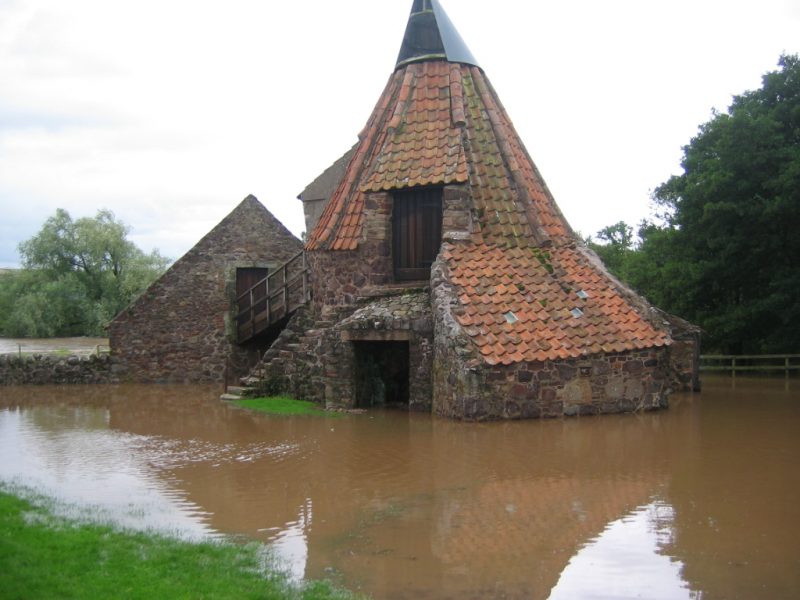
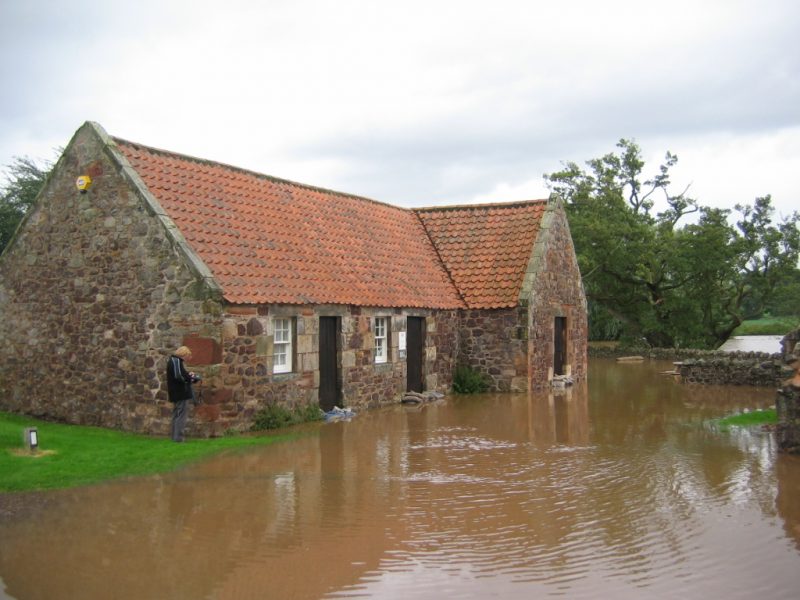
The earliest evidence of a water-driven wheel is probably the Perachora wheel (3rd century BC), in Greece. The earliest written reference is in the technical treatises Pneumatica and Parasceuastica of the Greek engineer Philo of Byzantium (c. 280−220 BC) The British historian of technology M.J.T. Lewis has shown that those portions of Philo of Byzantium’s mechanical treatise which describe water wheels and which have been previously regarded as later Arabic interpolations, actually date back to the Greek 3rd-century BC original.The sakia gear is, already fully developed, for the first time attested in a 2nd-century BC Hellenistic wall painting in Ptolemaic Egypt
In some developing countries, watermills are still widely used for processing grain. For example, there are thought to be 25,000 operating in Nepal, and 200,000 in India. Many of these are still of the traditional style, but some have been upgraded by replacing wooden parts with better-designed metal ones to improve the efficiency. For example, the Centre for Rural Technology in Nepal upgraded 2,400 mills between 2003 and 2007
